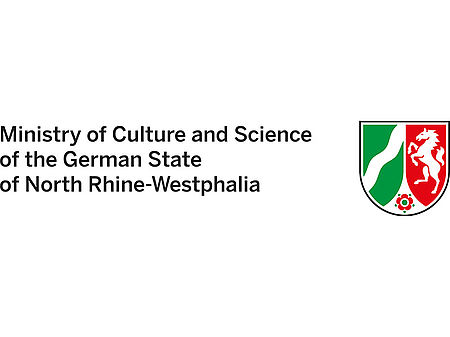Preparing a manuscript for journal submission: key points to consider
In this article, we examine the key issues you should take into account when preparing a manuscript for publication in a scientific journal. Remember that each journal will also have its own specific requirements and guidelines. These can generally be found on the journal’s website under “Information for authors”, “Submitting your manuscript” or a similar heading.
It is important to closely follow the journal’s instructions, since any major discrepancies or omissions could cause your manuscript to be rejected. To avoid having to revise or reformat your work before submission, a good strategy is to tailor your manuscript to your chosen journal’s requirements from the moment you start writing.
If any of the journal’s guidelines or instructions are ambiguous or unclear, ask the editors for clarification. Browsing the articles in a recent issue of the journal will also give you some idea of how your manuscript should be prepared and formatted.
Layout and formatting
Most journals have very specific requirements regarding the layout and formatting of submitted manuscripts. These might include all or any of the following:
- text formatting, e.g. page margins, font type, font size; page, line and paragraph numbers; heading styles, etc.,
- formatting of tables and captions,
- preferred citation style, e.g. Vancouver,
- formatting of formulas,
- required file formats for texts, images, diagrams etc. (e.g. .docx, .jpeg, .pdf),
- style and spelling, particularly for manuscripts in English (British or American),
- use of abbreviations and instructions on preparing a list of abbreviations,
- manuscript length depending on the type of article,
- etc.
Some journals even allow authors to download a manuscript template to help them submit their paper in the correct format.
Note that if you submit a manuscript that exceeds the specified maximum length, some journals will charge additional fees rather than shortening your manuscript; these fees are known as page charges.
Equally, some journals apply colour charges for printing figures or images in colour, especially if there is also a print version of the journal. These costs are separate from the article processing charges that may be charged by open access publications.
Structure and presentation of content
As well as layout and formatting requirements, journals will also specify how the content of the article should be structured and presented.
Many journals require authors to follow the IMRaD structure, which comprises the following:
- introduction,
- methods,
- results, and
- discussion.
Equally important is the References section, which lists all the sources cited in your research paper. As a rule, the formatting of this list is determined by the citation style used.
Some journals may also require authors to list all their illustrations, figures and captions at the end of the manuscript. The initial manuscript should then only include a reference to each illustration; the actual figures and graphics will then be inserted in the paper professionally during the typesetting process. It may be necessary to upload figures, images etc. separately.
Furthermore, standardised reporting guidelines have been developed for different types of studies. These are available on the website of the EQUATOR Network (Enhancing the QUAlity and Transparency Of health Research), which provides information on key specifications and, where available, translations into languages other than English. Reporting guidelines listed on EQUATOR include, for example:
- Randomised trials: CONSORT
- Observational studies: STROBE
- Systematic reviews and meta-analyses: PRISMA
- Clinical case reports: CARE
- Qualitative research: SRQR
- Diagnostic/prognostic studies: STARD
- Quality improvement studies: SQUIRE
- Economic evaluations: CHEERS
- Animal pre-clinical studies: ARRIVE
- Study protocols: SPIRIT
- Clinical practice guidelines: AGREE
Many journals will specify which guidelines should be used in their information for authors.
Some journals also specify which nomenclature should be used for drugs, genes or proteins. It is also important to check for any specific instructions on using abbreviations and units of measurement.
Additional information required to submit a manuscript
Scientific journals will often require authors to provide additional information, either within the manuscript itself or in some other format. The required information will depend on whether the manuscript is a research article, a case study, a systematic review, a commentary, a brief report or some other type of publication. The following information is often requested in the field of life sciences, though this list is not exhaustive:
- Abstract: a summary of the methodology and the main results, either in text form or – if specified by the journal – using a figure or table. Alternatively, some journals may require authors to provide an abstract that is aimed at a wider public.
- Acknowledgements / testimonies of gratitude: a section that lists the individuals and/or groups who contributed to the manuscript but who do not qualify as authors, such as individuals who provided ideas, assistants, reviewers or third-party funders (“Funding acknowledgements”).
- Affiliation: the institution at which the author(s) conducted the research.
- Author contributions: a section that describes the contribution each author made to the manuscript; the Contributor Role Taxonomy (CRediT) is a widely adopted standard in this context. Some journals specify which activities qualify as authorship.
- Information on the registration of clinical trials: if the manuscript includes the results of a clinical trial, information must be provided on the registration of this trial. Preregistration of clinical trials is mandatory in certain contexts, particularly in the field of life sciences.
- Conflicts of interest: disclosure of business or personal ties to companies, organisations, individuals etc. that may be impacted by the research, whether positively or negatively.
- Submission statement: a cover letter to the editors, explaining why the manuscript is a good fit for the journal. Among other things, the submission statement should summarise the methodology and key findings of the research and highlight its novelty in the field.
- Data availability statement: information on the conditions under which the research data associated with a paper can be accessed.
- External funding: if the research project was supported by external funding, information must be provided on the funders and funding codes; this also applies to publications based on research projects that were not externally funded but that received funding through an initiative such as DEAL. In some cases, this information may also appear in the Acknowledgements section.
- Keywords: terms that describe the content of the research.
- ORCID: the registered ORCID IDs of the corresponding authors.
- Patient consent: authors may only use patient data in their research if they obtained the patients’ consent.
- Ethical declaration: articles reporting on studies involving patient data or human participants, as well as those involving animal experiments, must acknowledge the importance of ethical issues by demonstrating that approval was granted by the institution’s ethics committee.
- Appendix or supplement: in order to keep the paper concise and manageable, any additional content that supports or enhances the main content should be published as an appendix or supplement to the manuscript. Appendices usually contain text, supplements generally contain other types of content.
Requirements for other types of publication
Similar requirements generally apply to conference proceedings (written summaries of presented papers that are published prior to or subsequent to the actual conference).
Preparing a manuscript for double-blind peer review
To maintain a high standard of quality, many journals carry out a peer review process in which the authors’ and reviewers’ identities are concealed from each other. This is known as double-blind peer review. To prevent the peer reviewer from figuring out who the author is from clues in the manuscript, the version of the paper submitted for review must be anonymised; in other words, any identifying information is removed prior to submission and then reinserted after the review and acceptance of the manuscript. Identifying information includes not just the names of the authors, but also the names of projects, acknowledgements and references to the authors’ own publications, all of which must be removed prior to peer review.
Help with preparing manuscripts: courses in academic writing
Most universities offer introductions to academic writing as part of their course curriculum. Such introductory courses are also offered by graduate schools and other centres of postgraduate education. They may also appear on the schedule of specialist conferences if these include a dedicated programme for early-career researchers.
Many publishers also offer paid services that aim to improve the language and readability of scholarly texts.
ZB MED’s search portal LIVIVO is a useful resource for finding books on the topic of academic writing, particularly as it applies to life sciences.
Publishing vs. patenting
If your research results are patentable or worth patenting, you should refrain from publishing them until you have a patent application filed. Once published, your results will be included in the state of the art, which is used to assess the novelty of a technological development. Publication may therefore be detrimental to the ability to claim novelty and could potentially jeopardise patentability. You should also avoid publishing the work as a preprint. University technology transfer offices (TTOs) can provide further advice on these issues.
Using AI tools to write manuscripts
Artificial intelligence (AI) and tools based on large language models (LLMs) such as ChatGPT are becoming increasingly popular as writing aids. Consequently, journals are now issuing policies on how such tools may be used, whether for writing manuscripts or for other tasks. There are certain points that have achieved something of a consensus in many scientific communities and that often appear in such policies, such as:
- Any use of these tools must be disclosed and declared upon submission; however, such tools may not be credited as a co-author since they are not human beings.
- Authors bear sole responsibility for the manuscript, i.e. they are obliged to check whatever these tools produce to ensure it is correct and not plagiarised. If a tool generates references, the author is responsible for checking that the cited publications actually exist.
These points should be observed even if the journal has not yet drafted its own policy on this topic: adherence to this approach is good research practice, while failure to observe these points may lead to allegations of research misconduct.
Submitting a prepared manuscript
Many journals use a manuscript submission system. Generally speaking, such systems are also used to send revisions, to conduct peer review, and to perform other steps in the submission process. Similar systems are also used for conferences; these often include functions for managing registrations and similar tasks. It is usually necessary to register in order to use these kinds of systems. Some smaller journals also accept manuscript submissions by email.
Many journals publish articles in numbered issues that are published within defined time frames. Accordingly, manuscripts must often be submitted by a prescribed deadline.
Once a manuscript has been submitted, it undergoes a formal review by the editors before entering the peer review process.
Why simultaneous submission to multiple journals should be avoided
It is best to avoid submitting a manuscript to more than one journal at the same time. Submission to multiple journals creates an unnecessary strain on peer review resources and could therefore be regarded as research misconduct. If a manuscript ends up being published in more than one journal, this is considered as plagiarism and may even represent a breach of copyright. A manuscript may only be submitted to a different journal once the peer review process has been completed and the manuscript has been rejected.
The use of “salami tactics” – i.e. cutting results as thin as salami slices and splitting them across several manuscripts even though they could easily be reported in just one – can also be considered misconduct because it artificially increases an author’s publication count. Once again, this approach should be avoided.
Siehe auch
Why researchers should check their institution’s affiliation policy before publishing their work
The role of an academic author: key tips for researchers
An introduction to good research practice, research misconduct and academic integrity
Peer review: Why is it important?
Reputation and research assessment in academia – a brief introduction
Disclaimer
Important note: The information and links provided here do not represent any form of binding legal advice. They are solely intended to provide an initial basis to help get you on the right track. ZB MED – Information Centre for Life Sciences has carefully checked the information included in the list of FAQs. However, we are unable to accept any liability whatsoever for any errors it may contain. Unless indicated otherwise, any statements concerning individual statutory norms or regulations refer to German law (FAQ updated 03/2024).
Contact

Dr. Jasmin Schmitz
Phone: +49 (0)221 999 892 665
Send mail
Related links
Parisio Poldiak, N., & Crossley, N. (2025). How to Write a Successful Research Manuscript: Back to Basics. HCA Healthcare Journal of Medicine, 6(2).




